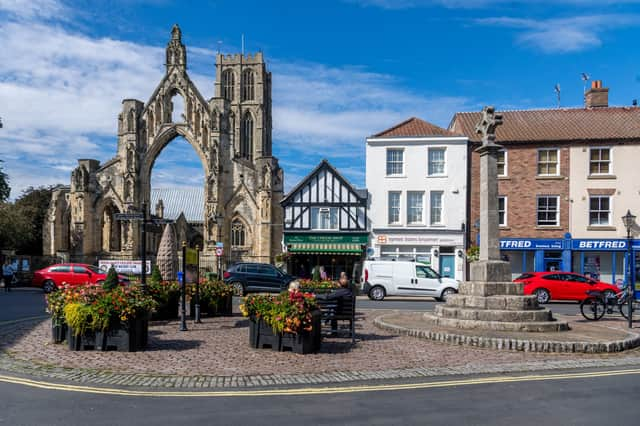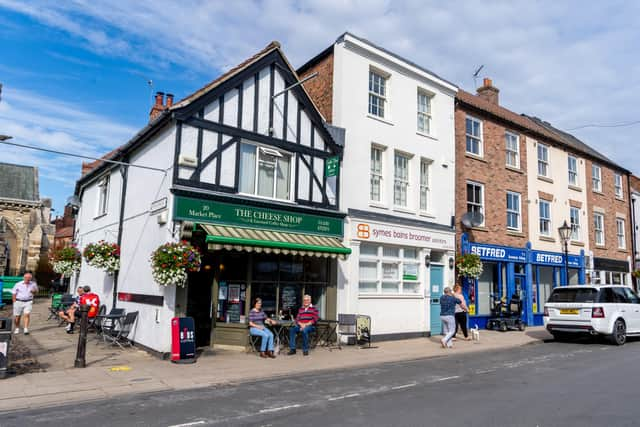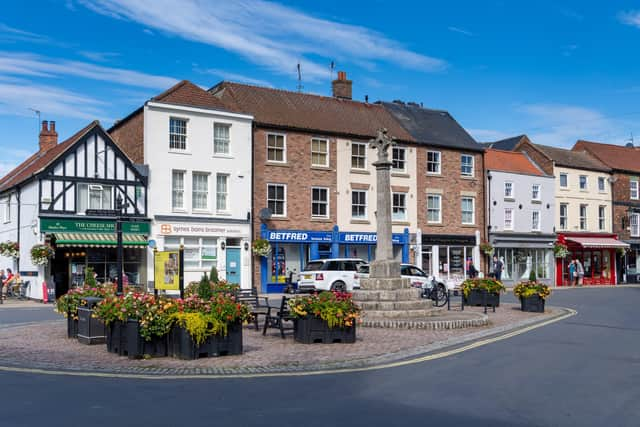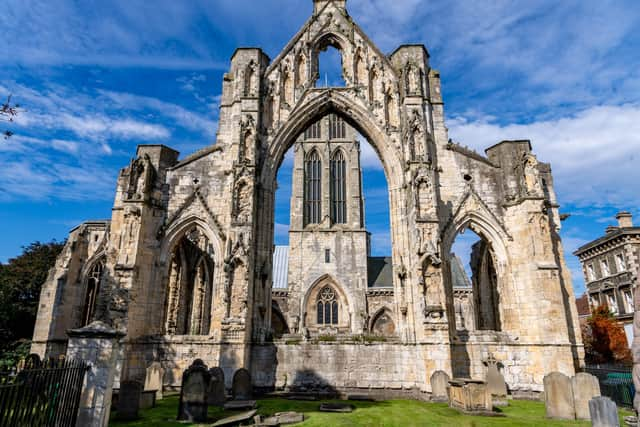Howden; the little town with a big history - including a 17th Century lockdown


As I was writing this article I stumbled upon a fascinating historical fact about Howden that has parallels with our recent collective experience of living through a global pandemic and period of enforced lockdown. On August 27, 1665, King Charles II issued a proclamation cancelling Howden Fair and prohibiting the attendance of anyone from London, owing to the plague. This early example of lockdown was aimed at minimising the spread of the plague from the capital by preventing a mass gathering of people in the East Yorkshire market town.
But why, you may well ask, did King Charles fear that so many people, particularly Londoners, would head north for Howden Fair? It may be difficult to imagine now, but during medieval times, Howden had a level of significance and influence that belies its size and stature today. It was once famous throughout Europe for its horse fair, which was described as the “largest in the kingdom”. King John originally granted a licence for the fair in 1200 and, as it evolved into a specialist horse fair, every September buyers from across the UK and Europe would descend on Howden.
Advertisement
Hide AdAdvertisement
Hide AdAn article in The Sporting Magazine in 1807 estimated that up to 4,000 horses would go on sale on each day of the fair. Military buyers attended to procure horses for their armies, so it’s highly likely that Wellington’s Cavalry would have used horses bought at Howden in the Napoleonic Wars.


The whole town and many people from surrounding villages would have been involved in the fair but, by 1970, the local newspaper, The Goole Times, reported: “Even as a recently as 30 years ago, hundreds of people who brought thousands of horses and spent thousands of pounds visited the town every September for about a fortnight. Nowadays a stranger would not know that a fair existed. I attribute this disastrous change in the first place to the railways, secondly to electric trams, thirdly to agents scouring the country for horses, fourthly to the advent of bicycles and motor-cars and chiefly to the numerous auctions marts for the sale of horses all over the country.”
William the Conqueror granted Howden to the Bishop of Durham in 1080 and it became an important centre of learning, a place of pilgrimage, and, at times, even hosted the royal court. According to Dr Jon Kenny, of Community Archaeology, the town’s location close to the River Ouse allowed the Prince Bishops of Durham to wheel and deal “Game of Thrones style” with the important medieval players in Yorkshire, as well as royalty.
However, just as the horse fair eventually disappeared from the calendar, Howden’s significance also waned after the Reformation. Thankfully, there are still many lasting reminders of its illustrious past, including its cathedral-like Grade 1-listed Minster, which dominates the skyline for miles around.
Advertisement
Hide AdAdvertisement
Hide AdThe town’s first church is thought to have been built in Saxon times but was rebuilt by the Bishops of Durham in the Early English style. Today, English Heritage manages the ornate ruins of the 14th century chancel and chapter house in the grounds, but the Minster is still operational as a place of worship for the local community.


Sadly, other great landmarks have been lost, including the vast palace that the Bishops of Durham built on land close to the Minster. These days, only the Great Hall survives but, for the last two years, the area has been the subject of a community-led archaeological excavation project aimed at discovering the location of the town’s long-lost palace.
Howden Minster’s 135-foot tower and central location means that visitors to Howden simply can’t miss it, but the town’s Sacred Heart Catholic Church, which is tucked away at the junction of Knedlington Road and Buttfield Road, is also of architectural and historical interest. The striking Victorian, gothic revival style church – designed by JA Hansom, the well-known architect born in York who also invented the Hansom cab – opened its doors for worship in 1851, making it a relatively recent development in the history of a town that can trace its origins back to Anglo Saxon times.
A stroll around the charming cobbled streets and winding alleyways that surround the Market Place give you a palpable sense of Howden’s rich history, and much of the town centre is classed as a Conservation Area.
Advertisement
Hide AdAdvertisement
Hide AdUnlike so many market towns that have struggled to compete with the advent of out of town shopping centres and online shopping, Howden’s bustling streets are lined with a wealth of independent shops, eateries and businesses – everything from a popular greengrocer and two butcher’s shops to a high-end bridal boutique and a choice of shops selling gifts and homeware.


There’s also a small market every Friday, which takes place in the Shire Hall, a popular venue for community events, arts and entertainment, but spills out into the Market Place.
Just a stone’s throw from the Minster is the Ashes playing field, which was gifted to the people of Howden by local businessman Charles Briggs in 1927 and is managed by a registered charity. It’s an attractive green space fringed by mature trees with a play area and other recreational facilities; a lovely spot to enjoy a picnic.
The Ashes is where Howden Show, the town’s popular, annual agricultural show, first took place in 1855.
Advertisement
Hide AdAdvertisement
Hide AdAlthough many of Yorkshire’s agricultural shows have disappeared from the calendar in recent years, Howden Show is still going strong and takes place at The Ashes every summer, although this year’s event was one of only a handful in its history to be cancelled, as a result of the coronavurus pandemic.
Howden Marsh, a local nature reserve made up of a series of ponds, flood meadow and reed beds, is a short walk from the town centre and there are raised walkways around much of the site, making it accessible to pram and wheelchair users.
Howden is one of those seemingly quiet, unassuming places, but scratch beneath the surface just a little and you find history and stories galore.
Support The Yorkshire Post and become a subscriber today.
Your subscription will help us to continue to bring quality news to the people of Yorkshire. In return, you’ll see fewer ads on site, get free access to our app and receive exclusive members-only offers.
Advertisement
Hide AdAdvertisement
Hide AdSo, please - if you can - pay for our work. Just £5 per month is the starting point. If you think that which we are trying to achieve is worth more, you can pay us what you think we are worth. By doing so, you will be investing in something that is becoming increasingly rare. Independent journalism that cares less about right and left and more about right and wrong. Journalism you can trust.
Thank you
James Mitchinson
Comment Guidelines
National World encourages reader discussion on our stories. User feedback, insights and back-and-forth exchanges add a rich layer of context to reporting. Please review our Community Guidelines before commenting.